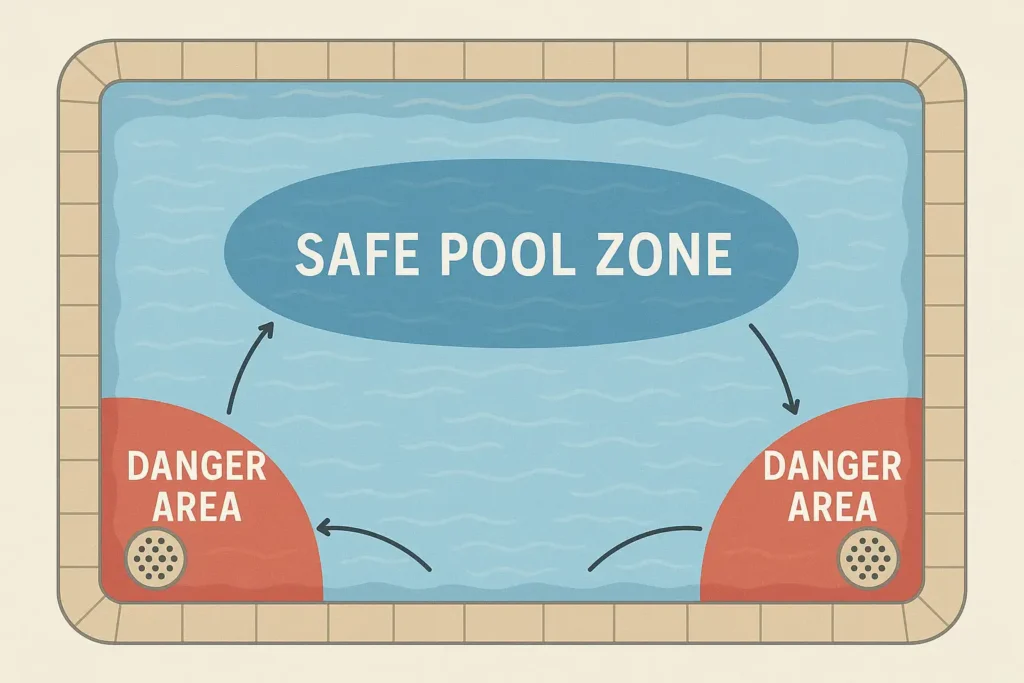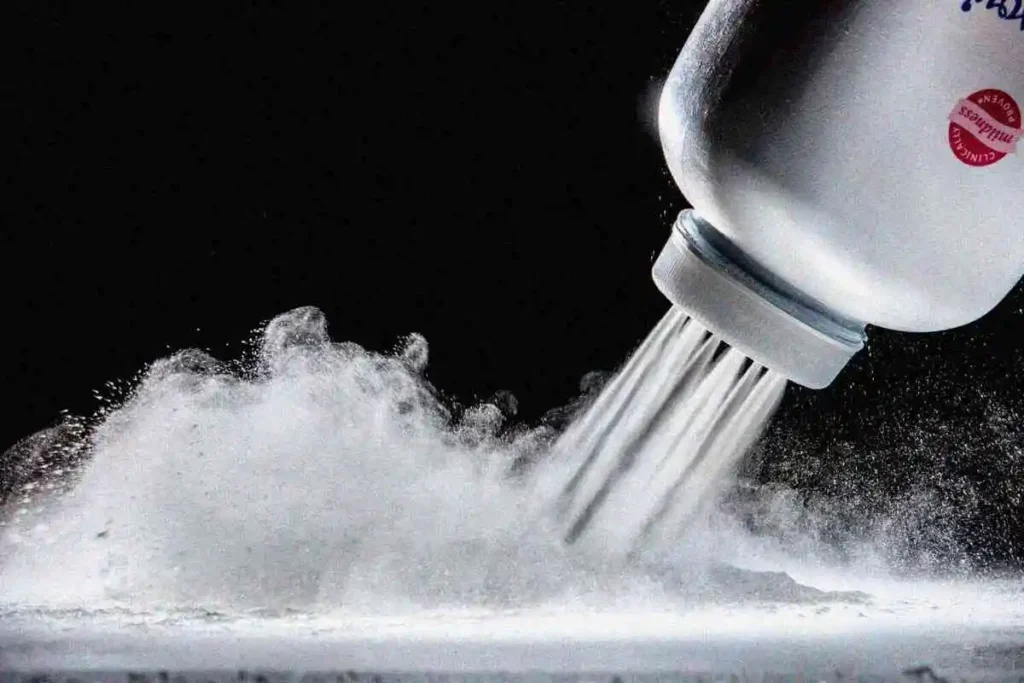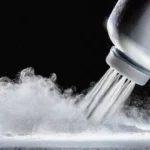Now Reading: Top 10 Water Safety Tips for Families in 2025: Keep Your Summer Safe
-
01
Top 10 Water Safety Tips for Families in 2025: Keep Your Summer Safe
Top 10 Water Safety Tips for Families in 2025: Keep Your Summer Safe

Stay safe with these 2025 water safety tips for families. From swimming pool safety tips to using life jackets, learn how to prevent drowning and protect kids around water. Supervision, swim lessons, and nose clips are key. Enjoy summer safely with these practical, expert-backed strategies.
Make Every Splash a Safe One
Picture this: the sun’s shining, your kids are laughing, and you’re all cooling off at the lake or pool. Summer water fun is unbeatable, but it comes with risks. Drowning is a leading cause of death for kids under 14, and 2025 has seen tragic cases tied to Naegleria fowleri, the brain-eating amoeba, in places like South Carolina.
That’s why water safety tips are a must for every family. Whether you’re planning a beach day, a backyard pool party, or a boating adventure, these water safety tips for kids and families can keep everyone safe. Let’s dive into the top 10 water safety tips for 2025, packed with practical advice, swimming pool safety tips, and ways to enjoy safety around water without worry.
Why Water Safety Matters in 2025
Water activities are a summer staple, but dangers like drowning and infections lurk. According to the CDC, about 4,000 unintentional drownings occur annually in the U.S., with kids aged 1–4 at highest risk. Recent 2025 cases of Naegleria fowleri in lakes and splash pads highlight another peculiar threat.
Water safety tips for families aren’t just nice-to-haves—they’re lifesavers. From safety swimming to boating precautions, being prepared makes all the difference.
Top 10 Water Safety Tips for Families
Here are the top 10 water safety tips every parent should know to ensure safety around water in 2025.
1. Never Swim Alone
No one should swim without a buddy, especially kids. A partner can spot trouble or call for help. For safety swimming, teach kids to always have a friend nearby, whether at the pool or lake. Adults should model this, too—solo swims are risky for everyone.
2. Supervise Children Closely
Constant, focused supervision is a cornerstone of water safety tips for kids. Assign a dedicated adult to watch kids in or near water, avoiding distractions like phones. In 2025, a near-drowning at a Florida pool showed how quickly things can go wrong without eyes on kids.
3. Avoid Breath-Holding Games
Breath-holding games sound fun but can lead to shallow-water blackout, a dangerous loss of consciousness. Teach kids to skip these games for swimming rules and safety. Instead, encourage safe challenges like floating or swimming laps.
4. Use Coast Guard-Approved Life Jackets
A boat life preserver or life jacket is non-negotiable, especially for kids and weak swimmers. Choose Coast Guard-approved jackets, not floaties, which can fail. For example, a 2025 Virginia boating incident was less severe because all kids wore proper life jackets.
5. Reach, Throw, Don’t Go
If someone’s struggling in water, don’t jump in—reach with a pole or throw a marine safety kit item like a life ring. Jumping in risks both lives. Teach kids this rule for safety around water at beaches or lakes.
6. Enter the Water Feet First
Diving headfirst into shallow or unclear water can cause injuries or expose you to Naegleria fowleri in warm freshwater. Always enter feet first to check depth and avoid brain eating water. This is critical for summer water safety tips.
7. Avoid Pool Drains
Pool drains can trap kids, leading to drowning. Swimming pool safety tips include teaching kids to steer clear of drains and ensuring pools have anti-entrapment covers. A 2025 case in Texas highlighted the need for updated pool safety standards.

8. Swim in Designated Areas
Stick to lifeguard-supervised areas at beaches or pools. Pool water safety depends on swimming where help is available. Wandering into unguarded zones, like a 2025 incident at a California beach, can lead to trouble.
9. Avoid Alcohol While Swimming or Supervising
Alcohol impairs judgment and reaction time, making it a no-go for swimming rules and safety. Whether you’re swimming or watching kids, stay sober to ensure safety around water. A 2025 boating accident in Virginia underscored this after alcohol contributed to a crash.
10. Learn CPR
Knowing CPR can save a life during a water emergency. Parents and teens should take a certified course. In 2025, a lifeguard’s CPR skills saved a child at a community pool, proving its value for water safety tips for families.
Protecting Kids from Brain-Eating Amoeba in Water
Warm freshwater can harbor Naegleria fowleri, a rare but deadly amoeba. Summer water safety tips now include protecting against this bizarre threat. Use nose clips to block brain eating water from entering the nose, especially in lakes or under-chlorinated pools. A 2025 Arkansas splash pad case showed how quickly infections can happen without proper pool water safety.
Why Nose Clips Can Save Lives
Nose clips are a simple but effective way to prevent Naegleria fowleri infections. They’re especially important for kids who love diving or splashing. For triathletes, a triathlon bathing suit with built-in nose clip storage can make safety seamless.
Drowning Prevention: Key Steps for Parents
Drowning happens fast—often in under a minute. Beyond the top 10 tips, parents should:
- Install pool fences with self-latching gates.
- Enroll kids in swim lessons early.
- Teach kids to float and tread water.
A 2025 study found that swim lessons reduce drowning risk by 88% in kids under 4, making them a top water safety tip for kids.
Choosing Safe Swimming Spots for Your Family
Not all water is safe. When picking spots:
- Check for lifeguards and clear signage.
- Avoid warm, stagnant lakes to reduce Naegleria fowleri risk.
- Confirm pool chlorination levels for pool water safety.
A 2025 South Carolina lake incident showed the dangers of unmonitored waters. Research local spots for safety swimming before heading out.
Enroll in Swim Lessons
Swim lessons are a game-changer for water safety tips for families. Kids learn to swim, float, and handle emergencies. Adults can benefit, too, especially for boating or triathlons. Programs like those from the Red Cross offer flexible options for all ages.
How to Teach Kids to Swim Safely
Start with basics: blowing bubbles, floating, and kicking. Use games to build confidence, but reinforce swimming rules and safety like staying near adults. Lessons should be fun but firm on safety.
At-Home Pool Safety Tips
If you have a backyard pool, swimming pool safety tips are critical:
- Install a four-sided fence at least 4 feet high.
- Use pool alarms for unexpected entries.
- Keep a marine safety kit with rescue tubes nearby.
A 2025 incident in Arizona showed how pool alarms saved a toddler from a near-drowning.
Boating Safety: Don’t Skip the Basics
Boating is a family favorite, but it requires extra precautions. A Virginia boating license is mandatory for operators in many states, ensuring knowledge of safety around water. Everyone needs a boat life preserver, and kids should stay seated to avoid falls. A 2025 Virginia boating mishap was less tragic because all wore life jackets.
What to Do in a Water Emergency
If someone’s in trouble:
- Call for help immediately.
- Use a life ring or pole to reach them.
- Start CPR if needed, once they’re out.
Training in advance makes you ready for the unexpected. A 2025 lifeguard’s quick response at a pool saved a life, showing preparation pays off.
Common Water Safety Myths Debunked
Myths can undermine water safety tips. Let’s clear up a few:
- Myth: Good swimmers can’t drown.
Truth: Even strong swimmers face risks from currents or exhaustion. - Myth: Floaties are as good as life jackets.
Truth: Only Coast Guard-approved jackets ensure safety. - Myth: Brain-eating amoebas are in all water.
Truth: Naegleria fowleri is only in warm, untreated freshwater.
FAQs About Water Safety Tips
Water safety tips for families include constant supervision, using life jackets, avoiding breath-holding games, and learning CPR to prevent drowning and ensure safety around water.
Follow swimming pool safety tips like supervising closely, using life jackets, avoiding drains, and ensuring proper chlorination to prevent accidents and infections like Naegleria fowleri.
Choose Coast Guard-approved boat life preservers that fit snugly. Avoid inflatable toys, which aren’t reliable for safety swimming. Check size and weight ratings.
Use nose clips, avoid warm freshwater lakes, and ensure pool water safety with proper chlorination to prevent Naegleria fowleri infections during summer activities.
Swim lessons teach swimming rules and safety, reducing drowning risk by 88% for young kids. They build skills and confidence for safety around water.
Yes, with a Virginia boating license, proper boat life preservers, and adherence to marine safety kit protocols, families can enjoy boating safely.
Conclusion: Keep Safety First for a Fun Summer
Water safety tips are your family’s ticket to a fun, worry-free summer. From swimming pool safety tips to boating safety, these strategies—supervision, life jackets, and avoiding brain eating water—can prevent tragedies. Whether you’re at a lake, pool, or beach, staying prepared keeps everyone smiling. Check out our [Boating Safety Guide] for more ways to stay safe, and share your favorite water safety tips for kids in the comments!

Ethan Cole is an American journalist with expertise across weather, tech, travel, and culture. With over 15 years of experience, he delivers sharp, reader-friendly stories that simplify complex topics and connect with audiences worldwide.
Stay Informed With the Latest & Most Important News
Previous Post
Next Post
-
 01Happy Gilmore 2: Your Complete Guide to the Golf Comedy Sequel
01Happy Gilmore 2: Your Complete Guide to the Golf Comedy Sequel -
 02Joe Root’s Test Runs: England’s Batting Genius in Focus
02Joe Root’s Test Runs: England’s Batting Genius in Focus -
 03The Bad Guys 2 (2025): Everything We Know So Far
03The Bad Guys 2 (2025): Everything We Know So Far -
 04Demon Slayer: Kimetsu no Yaiba The Movie: Infinity Castle Tickets – Your Guide to the Epic Anime Event
04Demon Slayer: Kimetsu no Yaiba The Movie: Infinity Castle Tickets – Your Guide to the Epic Anime Event -
 05RTX 50 Series Unleashed: Next-Gen Gaming Power Awaits!
05RTX 50 Series Unleashed: Next-Gen Gaming Power Awaits! -
 06The Naked Gun 2025: What to Know About the Comeback Comedy Starring Liam Neeson
06The Naked Gun 2025: What to Know About the Comeback Comedy Starring Liam Neeson -
 07Sensory Clothing for Kids: What Every Parent Needs to Know
07Sensory Clothing for Kids: What Every Parent Needs to Know














